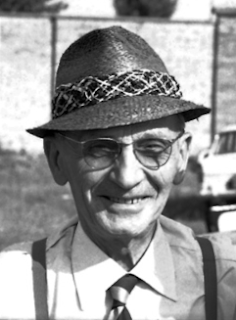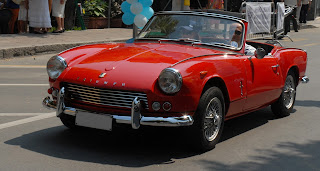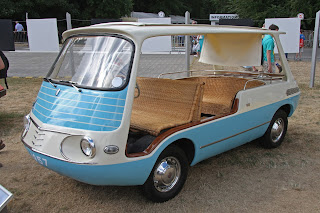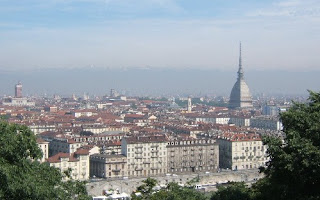Nobleman from Ferrara won Peking to Paris car race
 |
| Scipione Borghese (left) and journalist Luigi Barzini pictured with Borghese's Itala car |
The Italian adventurer Prince Scipione Borghese, who won a car race since described as the most incredible of all time, was born on this day in 1871 in Migliarino in Emilia-Romagna, not far from Ferrara.
Borghese was a nobleman, the eldest son of Paolo, ninth Prince of Sulmona. He was described as an industrialist and politician but he was also a mountaineer and a keen participant in the revolution in transport that began when the first petrol-powered motor vehicles appeared in the late 19th century.
In 1907 the French newspaper, Le Matin, which was keen to promote the growing motor industry in France, challenged readers to prove their theory that the car would open up the world's horizons, enabling man to travel anywhere on the planet.
When it asked for volunteers to take part in a drive from Paris to Beijing - then known as Peking - a 5,000-mile journey - Borghese's taste for the daring was immediately excited.
 |
| Volunteers haul the Itala through a steep mountain pass |
Borghese, despite his family having lost much of their wealth through a series of misfortunes, commissioned a car powered by a seven-litre engine from the Itala company in Turin with sponsorship from tyre manufacturers Pirelli. He would be accompanied on the journey by two more Italians - his mechanic and sometime chauffeur, Ettore Guizzardi, and Luigi Barzini, a journalist.
To avoid the monsoon rains, the proposed direction of the race was reversed to start in Peking in June 1907 with the cars driving westward to Paris. The conditions could hardly have been less car-friendly, the route taking in numerous mountain ranges and two major deserts where no provision had been made for recognisable roads.
Although the project was conceived as a demonstration of the potential of the automobile rather than a race, Borghese was determined to make it one and win it, planning assiduously to give his team the best chance. He arranged for fuel and spare parts to be stored along the route and, before the race began, took a 300-mile ride on horseback to the mountain passes north of Peking carrying a bamboo pole cut to the width of his car to see if the Itala could squeeze through.
The route led through deserts, mountain passes and steppes to Outer Mongolia, on to Moscow and then across Russia, Poland, Germany and Belgium to Paris. There were often mountain tracks and paths rather than roads, no petrol stations and no one who had ever seen a motor car before.
 |
| The Itala was left upside down after falling through a bridge but survived |
At one point the Itala rolled back down a narrow pass and Guizzardi only just managed to stop the car dropping into a ravine, taking him with it; at another, all three of the team were lucky to escape injury when a bridge collapsed under them. At times, the car had to be hitched to mule trains or teams of men to cross treacherous mountain passes.
Amazingly, the car kept going and by the time they reached Moscow, Borghese and his crew were 17 days in front of their nearest pursuers, enough of a lead for Borghese even to make a detour to St Petersburg for a party.
The final leg to Paris was uneventful by comparison, although Borghese was stopped for speeding in Belgium. When the Itala reached Paris on August 10, the lead had been extended to 20 days.
The Itala arrived at the finishing line in the French capital at 4.30pm to a huge ovation from crowds encouraged to attend by Le Matin's trumpeting of the success of their challenge. A dinner was given in Borghese's honour, attended by the Italian chargé d’affaires and prominent automobile industry figures.
Luigi Barzini, who worked as a war correspondent during the First World War and was editor at different times of both Corriere della Sera and Il Mattino, two prominent Italian newspapers, was followed into journalism by his son, also called Luigi, who was most famous for his 1964 book, The Italians, a probing analysis of the Italian national character that is credited with generating the fascination with Italian life and culture shared by many outside the country.
 |
| Ferrara has 9km of ancient walls, with walkways and cycle paths along most of its length |
Migliarino, where Scipione Borghese was born, is a small town in the province in of Ferrara, a city famous for its castle, a wealth of palaces, a beautiful pink and white Duomo and the 12th century city walls that remain intact to this day, stretching to nine kilometres in length.
Travel tip:
Ferrara is the ideal city destination for cycling enthusiasts thanks to a network of cycle paths all around the city and the perimeter walls and a city centre from which cars are banned. The self-proclaimed Città delle Biciclette - city of bicycles - since the late 1960s, Ferrara offers numerous outlets from which tourists can rent bicycles and enjoy exploring a beautiful city that combines medieval history and Renaissance elegance.
Books:
Luigi Barzini's book, Peking To Paris: Across Two Continents in an Itala, was reprinted by Penguin in 1986 and some second hand copies are still available on Amazon.
Buy Luigi Barzini junior's book, The Italians
Buy Luigi Barzini junior's book, The Italians
Home







